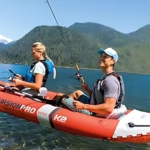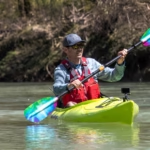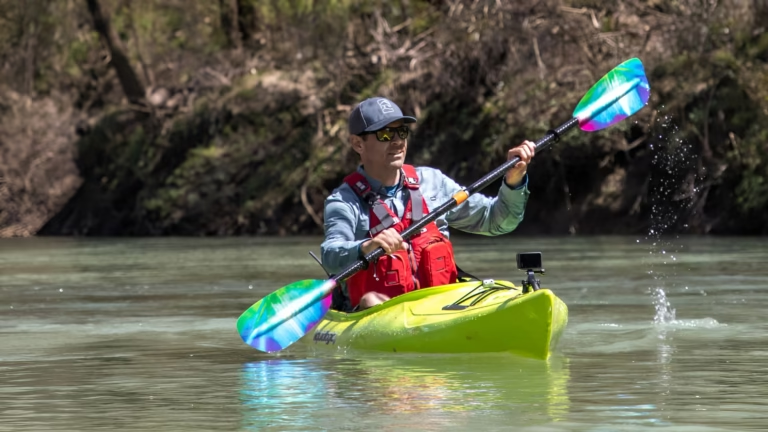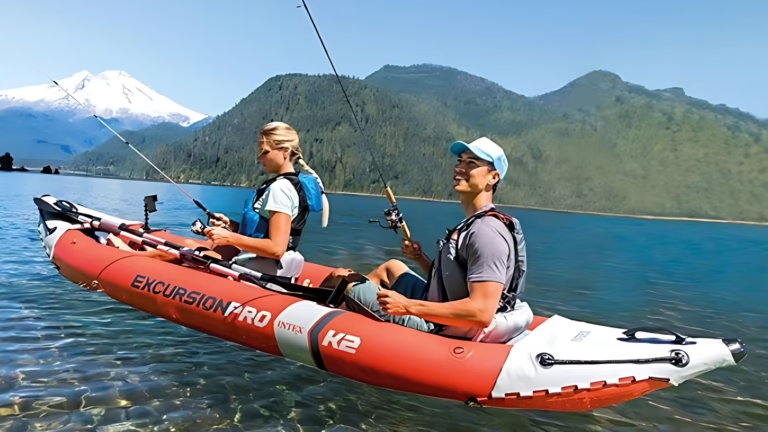Best Kayaking Techniques for Endurance.To boost endurance in kayaking, maintain a steady paddling rhythm and use proper body mechanics. Focus on breath control and efficient strokes.
Kayaking is not just about speed; endurance plays a crucial role in long-distance paddling. Building stamina requires mastering specific techniques and maintaining physical fitness. Consistent practice and proper form are essential for improving endurance. Engaging the core muscles and synchronizing your paddling with breath control can help conserve energy.
Hydration and nutrition also contribute to prolonged performance. By incorporating these strategies, you can enhance your kayaking experience and tackle longer distances with ease. Whether you’re a beginner or an experienced paddler, focusing on endurance techniques can make your kayaking adventures more enjoyable and less exhausting.
Introduction To Kayaking Endurance
Kayaking endurance helps you paddle longer without getting tired. It is essential for long kayaking trips. Improving endurance ensures you enjoy your adventure more.

Importance Of Stamina
Stamina is key in kayaking. Good stamina helps you paddle continuously. It reduces the risk of fatigue and injuries. Building stamina involves regular practice and proper techniques.
Here are some factors that highlight the importance of stamina:
- Longer Trips: High stamina allows for extended kayaking trips.
- Safety: Prevents exhaustion-related accidents.
- Performance: Enhances overall paddling performance.
Benefits Of Endurance Training
Endurance training offers numerous benefits. It enhances your overall kayaking experience. Let’s explore some of these benefits:
| Benefit | Description |
|---|---|
| Improved Cardiovascular Health | Boosts heart and lung function. |
| Increased Muscle Strength | Builds stronger muscles for efficient paddling. |
| Enhanced Mental Focus | Improves concentration during long trips. |
| Better Energy Management | Helps in conserving energy for longer paddles. |
Endurance training involves various activities. These include:
- Regular Paddling: Practice paddling frequently.
- Cross-Training: Engage in activities like swimming and running.
- Strength Training: Build muscle strength with weight exercises.
Consistency is key in endurance training. Regular practice ensures you build and maintain stamina. Incorporate these activities into your routine for the best results.
Proper Paddling Techniques
Proper paddling techniques are essential for improving endurance during kayaking adventures. By mastering efficient stroke mechanics and maintaining a consistent pace, paddlers can optimize their performance on the water.
Efficient Stroke Mechanics
Utilize proper body rotation and engage core muscles for powerful strokes.
- Rotate torso with each stroke for maximum reach and power.
- Keep arms slightly bent to reduce strain on shoulders.
- Immerse the blade fully in water for effective propulsion.
Maintaining Consistent Pace
Focus on rhythm and breathing to sustain endurance throughout the journey.
- Establish a cadence that suits your fitness level and conditions.
- Sync breathing with paddle strokes to maintain energy levels.
- Adjust pace based on wind, currents, and distance to optimize endurance.
Breathing Techniques
Proper breathing techniques can significantly enhance your kayaking endurance. Mastering these techniques ensures you maintain energy and avoid fatigue. This section will cover some essential breathing techniques that will help you paddle longer and more efficiently.
Rhythmic Breathing
Rhythmic breathing involves coordinating your breath with your paddling strokes. This synchronization helps maintain a steady pace and reduces strain on your body. Here’s how you can practice rhythmic breathing:
- Inhale deeply through your nose as you begin your stroke.
- Exhale slowly through your mouth as you complete the stroke.
- Maintain this pattern to keep your breathing and paddling in sync.
Start with a 2:2 pattern, where you inhale for two strokes and exhale for two strokes. Gradually, you can adapt this pattern to your comfort and pace.
Breath Control Exercises
Breath control exercises can help you build stamina and control. These exercises train your lungs to work efficiently under physical stress. Here are some effective breath control exercises:
- Diaphragmatic Breathing:
- Lie down or sit comfortably.
- Place one hand on your chest and the other on your belly.
- Inhale deeply through your nose, allowing your belly to rise.
- Exhale slowly through your mouth, letting your belly fall.
- Box Breathing:
- Inhale for a count of four.
- Hold your breath for a count of four.
- Exhale for a count of four.
- Hold your breath for a count of four.
- Pursed Lip Breathing:
- Inhale slowly through your nose for two counts.
- Purse your lips as if blowing out a candle.
- Exhale slowly and gently through your pursed lips for four counts.
Incorporate these exercises into your daily routine. They will enhance your breathing efficiency and improve your kayaking endurance.
Strength Training Exercises
Strength training exercises are essential for kayaking endurance. They build muscle strength and improve stamina. These exercises focus on the upper body and core. This helps in paddling longer and with more power.
Upper Body Workouts
Upper body workouts are crucial for kayakers. They enhance paddling power and endurance. Here are some effective exercises:
- Push-Ups: Push-ups build chest, shoulder, and arm strength.
- Pull-Ups: Pull-ups strengthen your back, shoulders, and arms.
- Rows: Rows target the upper back and help in paddling.
- Shoulder Press: This exercise builds shoulder endurance and strength.
| Exercise | Sets | Reps |
|---|---|---|
| Push-Ups | 3 | 12-15 |
| Pull-Ups | 3 | 8-10 |
| Rows | 3 | 10-12 |
| Shoulder Press | 3 | 10-12 |
Core Strengthening
Core strength is vital for kayakers. It stabilizes your body and enhances balance. Effective core exercises include:
- Planks: Planks build core stability and endurance.
- Russian Twists: This exercise targets the obliques and improves rotational strength.
- Bicycle Crunches: Bicycle crunches work the entire core and improve endurance.
- Leg Raises: Leg raises focus on the lower abs and build core strength.
| Exercise | Sets | Reps |
|---|---|---|
| Planks | 3 | 30-60 seconds |
| Russian Twists | 3 | 15-20 |
| Bicycle Crunches | 3 | 15-20 |
| Leg Raises | 3 | 12-15 |
Cardiovascular Conditioning
Cardiovascular conditioning is crucial for building endurance in kayaking. Strong cardiovascular health helps maintain energy levels. It also improves overall performance on the water. Below are key techniques to enhance your cardiovascular conditioning.
Interval Training
Interval training involves alternating between high-intensity and low-intensity paddling. This helps build endurance quickly. It’s effective and time-efficient. Here’s a simple interval training plan:
| Interval | Duration |
|---|---|
| Warm-up | 5 minutes |
| High-Intensity Paddling | 2 minutes |
| Low-Intensity Paddling | 3 minutes |
| Repeat | 5 cycles |
| Cool-down | 5 minutes |
Long Distance Paddling
Long distance paddling builds stamina over time. It strengthens both your heart and muscles. Here are some tips for effective long distance paddling:
- Set a goal: Aim for a specific distance each week.
- Pace yourself: Start slow and gradually increase speed.
- Stay hydrated: Drink water regularly to maintain energy.
- Monitor your heart rate: Keep it within a healthy range.
Follow these tips to improve your endurance effectively. Consistency is key. Stick to your plan and see amazing results.
Nutrition For Endurance
To kayak long distances, you need more than just strong muscles. Nutrition plays a key role in building your stamina. Eating the right foods and staying hydrated ensures your body performs its best. Below, we cover essential aspects of nutrition for endurance kayaking.
Pre-paddle Meals
What you eat before kayaking can greatly impact your performance. Choose foods that provide long-lasting energy.
- Complex Carbohydrates: Whole grains, oats, and brown rice offer sustained energy.
- Lean Proteins: Chicken, fish, and tofu help repair muscles.
- Healthy Fats: Avocados, nuts, and olive oil keep you feeling full.
A balanced meal could look like this:
| Food Item | Portion Size |
|---|---|
| Oatmeal with berries | 1 cup |
| Grilled chicken | 4 oz |
| Avocado slices | 1/4 avocado |
This meal provides a good mix of carbs, protein, and fats.
Hydration Strategies
Hydration is crucial for endurance kayaking. Dehydration affects your energy levels and focus. Keep these tips in mind.
- Drink water regularly throughout the day before your paddle.
- Carry a water bottle and sip every 20 minutes while kayaking.
- Electrolyte drinks can help replenish lost minerals. Choose low-sugar options.
To stay hydrated, you might need more than just water:
| Beverage | Benefit |
|---|---|
| Water | Basic hydration |
| Electrolyte drinks | Replaces minerals |
| Coconut water | Natural electrolytes |
Always listen to your body. Drink before you feel thirsty.
Mental Preparation
Mental preparation is key for boosting endurance in kayaking. A strong mind helps you handle long hours on the water. Let’s dive into effective mental techniques to improve your stamina.
Visualization Techniques
Visualization techniques can improve your endurance. Picture yourself kayaking smoothly. Imagine the water, your strokes, and your breathing. This mental practice helps your body respond better during real kayaking.
Here are some steps to follow:
- Find a quiet place to sit.
- Close your eyes and relax your body.
- Visualize a calm, clear river.
- See yourself paddling with strong, steady strokes.
- Imagine the feeling of a successful, long kayak trip.
Staying Motivated
Staying motivated can be challenging during long kayaking sessions. Break your journey into smaller goals. Celebrate each milestone you reach. This keeps your mind focused and positive.
Use these tips to maintain motivation:
- Set small, achievable goals: Focus on one section of the river at a time.
- Positive self-talk: Encourage yourself with uplifting words.
- Music or podcasts: Listen to something enjoyable while you paddle.
- Buddy system: Paddle with a friend to keep each other motivated.
Remember to keep your mind engaged and your spirit high. Consistent mental strength will enhance your endurance during kayaking.
Recovery And Rest
Recovery and rest are essential for any endurance sport, especially kayaking. Proper recovery ensures you are ready for the next adventure. Rest allows your body to heal and build strength. Let’s explore some effective techniques to enhance your recovery.
Post-paddle Stretching
After a long kayaking session, stretching is crucial. It helps relax your muscles and prevent stiffness.
- Hamstring Stretch: Sit with legs straight, reach for your toes. Hold for 15-30 seconds.
- Quadriceps Stretch: Stand on one leg, pull the other foot towards your buttocks. Hold for 15-30 seconds.
- Shoulder Stretch: Cross one arm over your chest and hold with the other arm. Hold for 15-30 seconds.
- Back Stretch: Sit down, legs extended, and reach forward. Hold for 15-30 seconds.
Importance Of Sleep
Sleep is the best way to recover. Aim for 7-9 hours of quality sleep each night.
- Create a bedtime routine. Go to bed at the same time every night.
- Keep your sleeping environment comfortable. This means a cool, dark, and quiet room.
- Avoid screens before bed. The blue light can disturb your sleep.
- Limit caffeine intake in the afternoon. It can make falling asleep difficult.
Remember, both stretching and sleep play a vital role in your recovery process. They help you stay strong and ready for your next kayaking adventure.
Frequently Asked Questions
What Are The Best Kayaking Techniques For Endurance?
To improve endurance in kayaking, focus on maintaining a steady pace. Use efficient paddling techniques like torso rotation. Keep your strokes consistent and avoid unnecessary movements.
How Can I Increase My Kayaking Stamina?
To increase stamina, practice long-distance paddling sessions. Incorporate strength and cardio workouts into your routine. Stay hydrated and fuel your body properly before and during kayaking.
Why Is Torso Rotation Important In Kayaking?
Torso rotation engages your core muscles, reducing strain on your arms. This technique helps maintain energy levels. It also improves paddling efficiency and endurance.
What Should I Eat Before A Long Kayaking Trip?
Eat a balanced meal rich in complex carbs and protein. Include fruits and vegetables for essential nutrients. Avoid heavy, greasy foods that can cause discomfort.
Conclusion
Mastering the best kayaking techniques for endurance can elevate your paddling experience. Practice consistently and focus on proper form. Build strength and stamina gradually. Soon, you’ll enjoy longer and more enjoyable kayaking adventures. Keep these tips in mind and paddle your way to success.
Happy kayaking!
